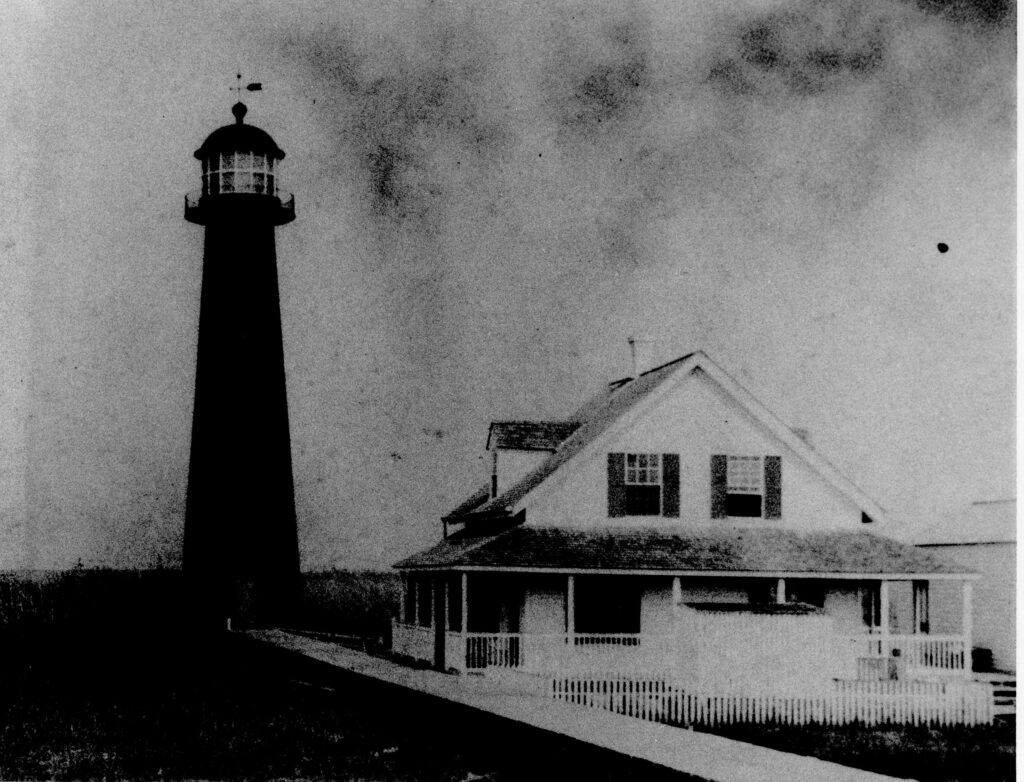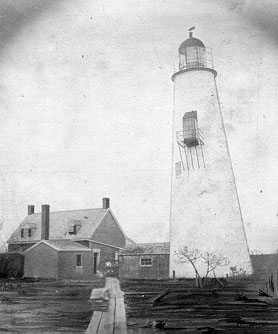
Kate Walker here, keeping the light on Robbins Reef. Building lighthouses on shifting sandy shores presented special problems.
In 1852 the new Light-House Board decided to discontinue the Gulf’s first coastal lighthouse at Frank’s Island, because the Northeast Pass of the
Mississippi Delta was shoaling badly, in favor of a tower at the mouth of nearby Pass a l’Outre, which tended to deepen. Before the 1850s Pass a l’Outre seldom offered the sailor more than six feet of water. Even fishermen shunned the pass. By 1854, however, one could suddenly float three times that depth without the aid of steam tugs. The young pass seemed more stable then the older Southwest Pass.
Rather than build a costly new tower, the Board decided to take down the iron Head of Passes Lighthouse and reassemble it at Pass a l’Outre. Reconstruction was delayed almost four years by title disputes, state politics, and annual yellow fever epidemics. In December 1855 Engineer Captain Danville Leadbetter proclaimed the tower ready for lighting by Keeper John Lory. In 1863 an entirely new keepers dwelling replaced the one burned by Confederates in 1862. The cast-iron tower received a new brick liner with braces to stabilize the staircase.
The new dwelling went up on nine brick tiers, but it soon settled. By 1868 the keepers house had sunk some six feet. The tower too suddenly descended, possibly from the added weight of the brick. Originally 8 feet above ground, the floor was soon inundated by high tide. In another 10 years the tower had settled a total of 15 feet. Once the tallest tower on the Gulf west of Matagorda Bay, the Pass a l’Outre lighthouse was in 1877 shorter than its little neighbor at Southwest Pass.

U.S. Coast Guard Historian’s Office
Soon after the second tower at Southwest Pass was built 1838, one side of the tower settled and the tower tilted to the westward, almost 5 feet out of plumb. This settling stopped and the tower showed no signs of strain. The lighthouse had been built on a man-made bank of sand and clay, enclosed by posts and planks. It was replaced in 1873 by an iron lighthouse tower.
Horn Island was one of the barrier islands that formed Mississippi Sound. The first lighthouse, a square wooden dwelling on five iron piles, was completed in 1874, but shifting sands soon threatened to undermine the structure.

Its keeper for 20 years was Civil War hero Martin Freeman, who had served as “the pilot guiding Admiral David Farragut’s fleet through the torpedo fields at Mobile Bay. He passed the forts riding the top of the flagship’s mainmast as enemy shells whistled past . . . . He was seriously wounded when a torpedo he was removing exploded. Freeman’s gallantry earned him the Medal of Honor, as well as a job as lighthouse keeper.
************

Information is from David Cipra, Lighthouses Lightships, and the Gulf of Mexico and LighthouseFriends.com

